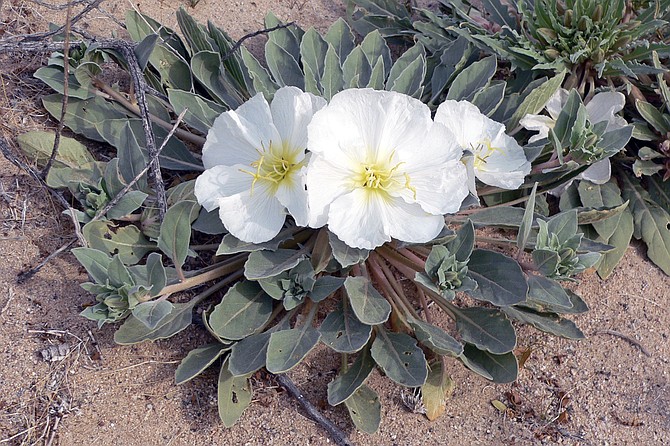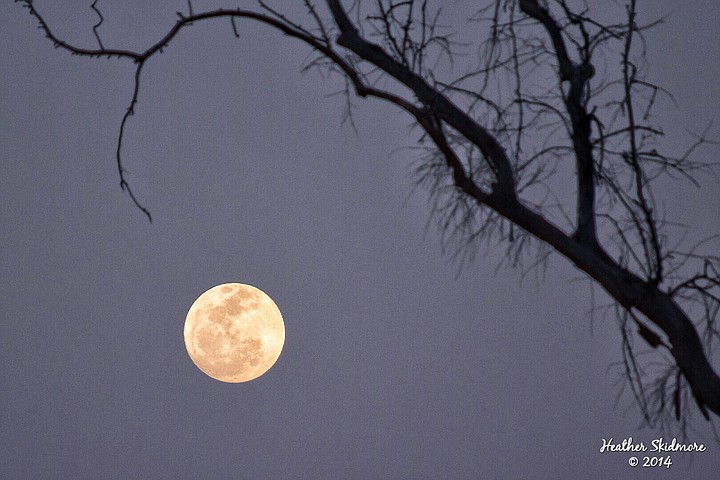 Facebook
Facebook
 X
X
 Instagram
Instagram
 TikTok
TikTok
 Youtube
Youtube

The Anza-Borrego Desert State Park flowers this month with peak blooms expected early in the month in low lying, warm areas like Borrego Valley, the Borrego Badlands, Coyote Canyon, and along Highway S-2 in the south end of the park. Among the many annually appearing wildflowers you’ll find in the low-lying areas are desert sunflower, dune primrose, lupine, desert chicory, sand verbena, and desert lily. On slightly higher ground and up along the hillsides, you’ll spot blooming brittlebush, chuparosa, ocotillo, apricot mallow, and more. Starting in mid-month, several varieties of cactus should explode into bloom. For the latest update on this season’s bloom cycle, call Anza-Borrego Desert State Park’s special hotline, 760-767-4684, for a recorded message.

Ocean Water Temperatures, of late in the 50s Fahrenheit, are finally on the upswing this month as the daylight hours lengthen and the sun arcs higher overhead in the sky each day. It will take about five months of spring and summer sunshine before the local ocean’s enormous mass and large heat capacity fully responds to the input of solar energy. A maximum water temperature in the low- to mid-70s is expected by August or September.

The final full moon of the winter season will appear on Tuesday, March 7. March’s full moon is called the "Worm Moon." It is believed that it refers to earthworms coming up out of the warming soil, it might also refer to beetle larva that emerge out of tree bark in anticipation of spring.
Pacific Daylight Time, or “daylight saving time,” starts on Sunday morning, March 12, at 2 am. No time is “saved” by advancing our clocks by one hour. This sneaky trick in civil time is designed to rouse us out of bed an hour earlier so that we can enjoy what seems to be an extra hour of daylight before the sun goes down. Daylight Saving Time, when applied to the months of long daylight, has been proven to save significant amounts of electrical energy.


The Anza-Borrego Desert State Park flowers this month with peak blooms expected early in the month in low lying, warm areas like Borrego Valley, the Borrego Badlands, Coyote Canyon, and along Highway S-2 in the south end of the park. Among the many annually appearing wildflowers you’ll find in the low-lying areas are desert sunflower, dune primrose, lupine, desert chicory, sand verbena, and desert lily. On slightly higher ground and up along the hillsides, you’ll spot blooming brittlebush, chuparosa, ocotillo, apricot mallow, and more. Starting in mid-month, several varieties of cactus should explode into bloom. For the latest update on this season’s bloom cycle, call Anza-Borrego Desert State Park’s special hotline, 760-767-4684, for a recorded message.

Ocean Water Temperatures, of late in the 50s Fahrenheit, are finally on the upswing this month as the daylight hours lengthen and the sun arcs higher overhead in the sky each day. It will take about five months of spring and summer sunshine before the local ocean’s enormous mass and large heat capacity fully responds to the input of solar energy. A maximum water temperature in the low- to mid-70s is expected by August or September.

The final full moon of the winter season will appear on Tuesday, March 7. March’s full moon is called the "Worm Moon." It is believed that it refers to earthworms coming up out of the warming soil, it might also refer to beetle larva that emerge out of tree bark in anticipation of spring.
Pacific Daylight Time, or “daylight saving time,” starts on Sunday morning, March 12, at 2 am. No time is “saved” by advancing our clocks by one hour. This sneaky trick in civil time is designed to rouse us out of bed an hour earlier so that we can enjoy what seems to be an extra hour of daylight before the sun goes down. Daylight Saving Time, when applied to the months of long daylight, has been proven to save significant amounts of electrical energy.
Comments